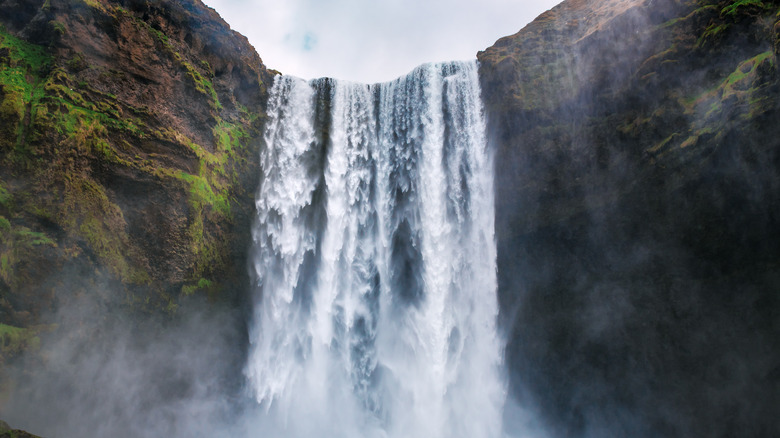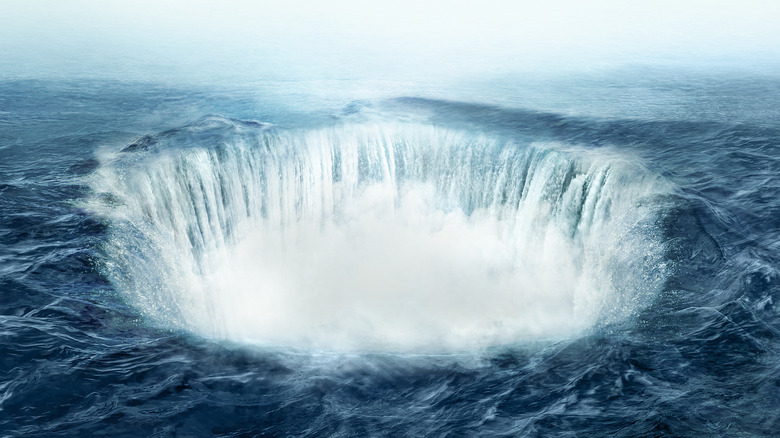Here's Where You'll Find The Largest Waterfall In The World
Niagara Falls may be the most recognizable waterfall, but it's certainly not the largest. Spanning the length of two countries and measuring 176 feet in height — with a brink length of 1,060 feet — Niagara Falls passes 150,000 gallons of water per second (567,811 liters per second). While impressive, these stats put Niagara Falls in the top ten waterfalls in the world (via NY Falls) — but not at the top spot.
Deep in South America, among the jungles of Venezuela, lays the Angel Falls (via Travel Awaits). The highest waterfall on land, the Angel Falls waterfall measures 3,212 feet (979 meters), which includes a 2,648 foot (807 meters) drop (via New World Encyclopedia). Located on the Churún River in southeastern Venezuela, Angel Falls is so high up in elevation that during the summer season, water evaporates before it ever touches the ground. According to Just Fun Facts, this dynamic gives Angel Falls that misty look it's noted for.
Meet the Denmark Strait cataract
While Angel Falls has a fairly scary drop, it's still not the largest waterfall in the world. Sure, Angel Falls holds the claim to the largest waterfall on land, but the world's largest is actually an underwater waterfall. Located between Greenland and Iceland — way up in the Arctic circle — is a channel of water known as the Denmark Strait, per Britannica. And around 2,000 feet beneath the surface of the water channel lies what's called the Denmark Strait cataract — a type of waterfall categorized by the large amounts of water rushing over the precipice.
Measuring an astounding 11,500 feet in height (3505 meters), the Denmark Strait cataract waterfall is the largest waterfall in the world, with an estimated downward flow of water of over 123 million cubic feet per second (via National Ocean Service). Compare this to the previously mentioned Niagra Falls, where the movement of water is a bit over 20,000 cubic feet per second (567,811 liters per second).
But how can a waterfall possibly exist in a large body of water to begin with? The answer lies in the location of the Denmark Strait. According to the National Ocean Service, water flowing from the Arctic Circle is cold and dense. As it travels southward down the strait, the cold, dense water meets up with the warmer waters of the Atlantic. At this point, the cold water sinks beneath the warm water, creating the cataract (waterfall) with a drop that's almost two miles down.

